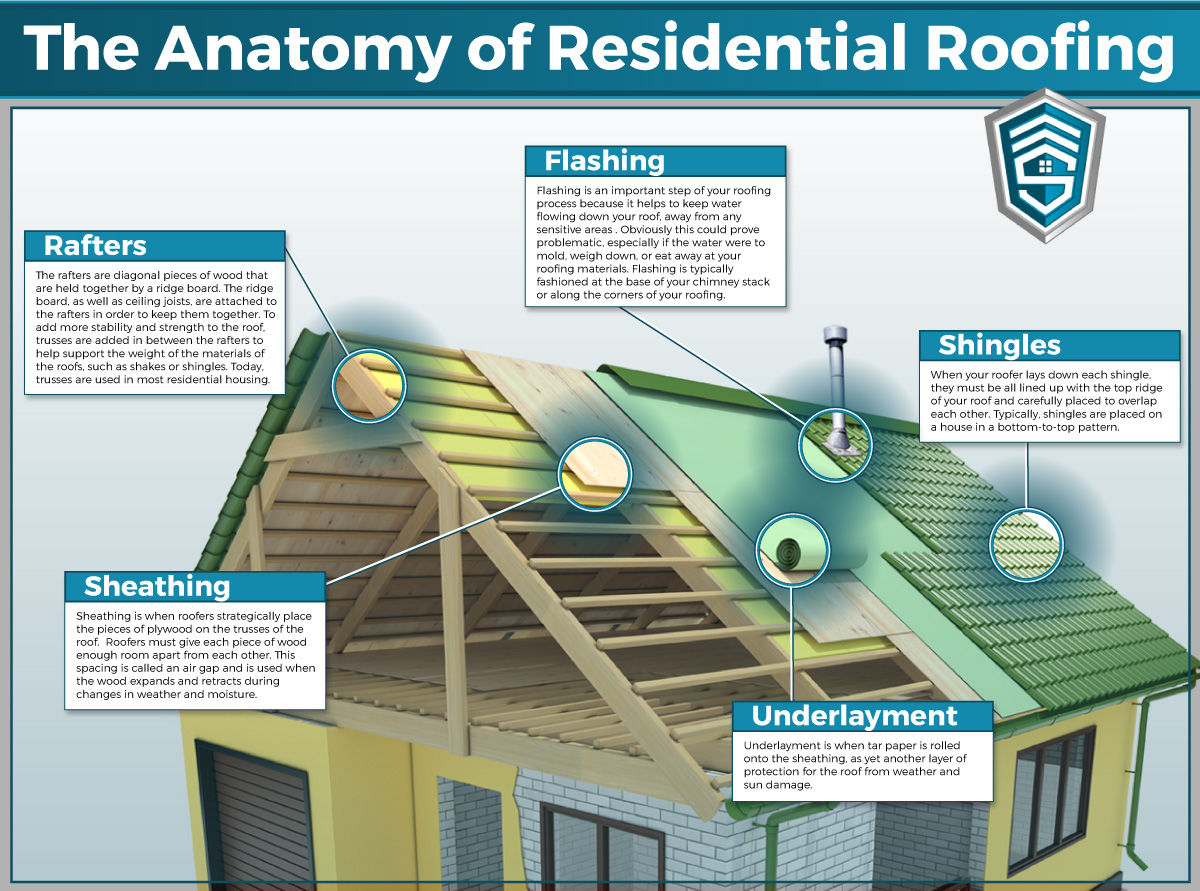The Function Of Roofing System Ventilation In An Effective Setup
The Function Of Roofing System Ventilation In An Effective Setup
Blog Article
Web Content Author-Kehoe Iversen
When you're taking on a roof job, you might not think much about roofing system air flow, however it's even more crucial than you understand. Effective air flow helps regulate temperature level and dampness in your attic, avoiding problems like mold and mildew and architectural damages. By understanding exactly how to develop and install a well balanced air flow system, you can improve power effectiveness and extend the life expectancy of your roof covering materials. So, what are the key elements to think about during installation that can make all the difference?
Significance of Roofing System Air Flow
Roofing system ventilation plays a vital duty in preserving the overall health and wellness of your home. By enabling fresh air to circulate through your attic, it aids manage temperature and moisture levels. This balance is important to prevent warmth accumulation during warm months, which can result in raised energy expenses as your air conditioning burns the midnight oil.
Additionally, proper ventilation considerably decreases the danger of moisture-related concerns like mold and mildew and mildew. If moisture levels increase, your home's architectural integrity can be endangered, causing expensive fixings. You would not want to deal with decaying timber or deformed roofing materials, right?
In addition, sufficient ventilation prolongs the lifespan of your roof. When warmth and wetness are kept in check, your roofing can perform ideally, stopping early damage. This indicates less headaches and costs down the line.
Exactly How Roofing Ventilation Functions
Effective roof air flow relies on the natural activity of air to develop a balance between consumption and exhaust. When you mount vents, you're basically allowing fresh air to enter your attic room while allowing warm, stale air to escape. This process assists manage temperature level and wetness levels, preventing problems like mold and mildew development and roof damage.
Intake vents, typically found at the eaves, reel in trendy air from outside. Meanwhile, exhaust vents, located near the ridge of the roofing, allow hot air surge and departure. https://dominickeysmg.thenerdsblog.com/38981031/amidst-the-myriad-roof-covering-alternatives-discover-the-key-factors-that-will-certainly-guarantee-your-choice-improves-your-home-s-appeal-and-durability-for-many-years-to-find in temperature creates a natural air flow, called the pile effect. As cozy air rises, it produces a vacuum that pulls in cooler air from the lower vents.
To optimize this system, you require to ensure that the intake and exhaust vents are correctly sized and placed. If the consumption is restricted, you won't attain the preferred ventilation.
Likewise, not enough exhaust can catch warmth and moisture, causing prospective damage.
Trick Installment Factors To Consider
When setting up roofing air flow, a number of key considerations can make or break your system's effectiveness. First, you need to analyze your roofing's style. The pitch, form, and materials all influence airflow and ventilation option. Ensure to pick vents that match your roofing system kind and neighborhood climate conditions.
Next off, consider the positioning of your vents. Ideally, you'll desire a well balanced system with consumption and exhaust vents placed for optimal air flow. Location consumption vents low on the roofing and exhaust vents near the height to urge a natural circulation of air. This arrangement aids stop dampness accumulation and promotes energy effectiveness.
Don't forget insulation. Proper insulation in your attic room stops warmth from getting away and keeps your home comfy. Ensure that insulation does not obstruct your vents, as this can impede air movement.
Last but not least, think about upkeep. Choose air flow systems that are easy to access for cleaning and assessment. Routine maintenance guarantees your system remains to function properly gradually.
Final thought
To conclude, roof covering air flow is vital for a successful installation. By making certain proper airflow, you can prevent heat buildup and wetness issues that lead to expensive damage. When you tactically position intake and exhaust vents, you improve power performance and prolong the lifespan of your roofing. Remember, a well-ventilated roof not only protects your investment but additionally improves your interior air top quality. So, https://www.facilitiesnet.com/roofing/article/3-Roofing-Trouble-Spots-and-How-to-Prevent-Them--19100 on air flow to make certain a resistant and cost-efficient roof for your home.
